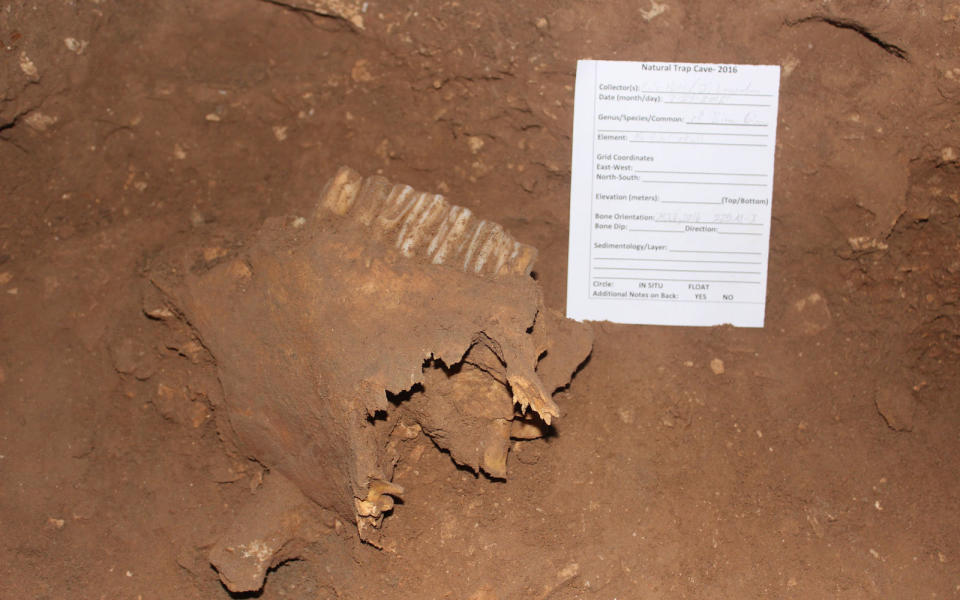Animals Have Been Falling in This Wyoming Cave for 38,000 Years
Nearly eight stories under the earth, the remains of wolf, bison, lion, cheetah, and wolverine have lay preserved in the cool humidity of a cave in Wyoming for some 38,000 years.
Ive been a lot of places on public lands but its a very different feeling, Delissa Minnick, field manager for the Bureau of Land Management in Cody, Wyoming, told Travel + Leisure. The quiet and the darkness when you turn out your head lamps; its very otherworldly.
Scientists conducting a dig in the Natural Trap Cave of the Big Horn mountains in northern Wyoming have found a veritable treasure trove of animal bones that date back to the Ice Age.
The cave is called the Natural Trap because for millennia it was just that: a death sentence for hapless animals that fell in its 15-foot-wide opening and were unable to escape. What was the animals misfortune has become scientists luck, as the cold temperature and humidity of the cave preserved entire specimens of a wide range of animals that roamed the region, some of which have been extinct for 12,000 years.
Researchers working on the dig, led by principal investigator Julie Meachen of Des Moines University, accessed the site by rappelling down on a single rope and then using pulleys to carry the fossils from the site.
A whole fox skull, the remains of an American lion, and the jaw of a cheetah were among Meachens most rare finds in Natural Trap. The photo below shows the skull of a bison from approximately 8,000 years ago.

Its unusual because of the abundance of specimens that are in there and the variety, Meachen told T+L. The cave never gets warmer than 40 degrees Fahrenheit, according to Meachen, and the cool temperatures have helped preserve such fossils for thousands of years.
Meachen and her team plan to use DNA samples from the fossils to study the genetics and morphology of these animals, as well as their climate.
Given the unique microclimate of the cave, it has been closed to the public by a barred grate and used exclusively for scientific research. Meachen and her colleagues first came to Natural Trap in 2014, and the site had not been used by researchers since the 1970s.
Jess McHugh is a digital reporter for Travel + Leisure. Follow her on Twitter at @MchughJess.
Related Articles

